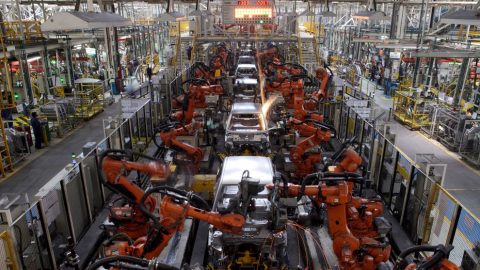
For more than 50 years, the automotive industry has been using robots in their assembly lines for a variety of manufacturing processes. Today, automakers are exploring the use of robotics in even more processes. Robots are more efficient, accurate, flexible, and dependable on these production lines. This technology has allowed the automotive industry to remain one of the most automated supply chains globally, and one of the largest users of robots.
With thousands of wires and parts in every vehicle, it takes a complex manufacturing process to get components to where they need to be. Here are several robotic applications that are crucial to an efficient assembly line:
1) Robotic Vision
A light industrial robotic arm with “eyes” can do more precise work because it can “see” what it’s doing. The robot wrist carries the laser and camera array that gives the machine instant feedback. Robots can now perform proper offsetting when installing a part, because they know where it goes. Installation of door panels, windshields, and fenders are more accurate with robotic vision than regular robot arms.
2) Spot and arc welding
robot sales north america automotive robotsLarge industrial robots with long arms and higher payload capabilities handle spot welding on heavy body panels. Smaller robots weld lighter parts such as mounts and brackets. Robotic tungsten inert gas (TIG) and metal inert gas (MIG) welders can position the torch in the exact same orientation on every cycle. Preserving high welding standards in every fabrication is doable due to the repeatable arc and speed gap.
Collaborative robots work together with other large industrial robots on massive assembly lines. Robotic welders and handlers must collaborate to keep the assembly line moving. Robot handlers need to place panels at the precise location so the welding robot can perform all the programmed welds.
3) Assembly
In most automotive manufacturing plants, light robotic arms assemble smaller parts such as motors and pumps at high speed. Other tasks, such as screw driving, wheel mounting, and windshield installation, are all done by robot arms.
Source: Roboticsbusinessreview